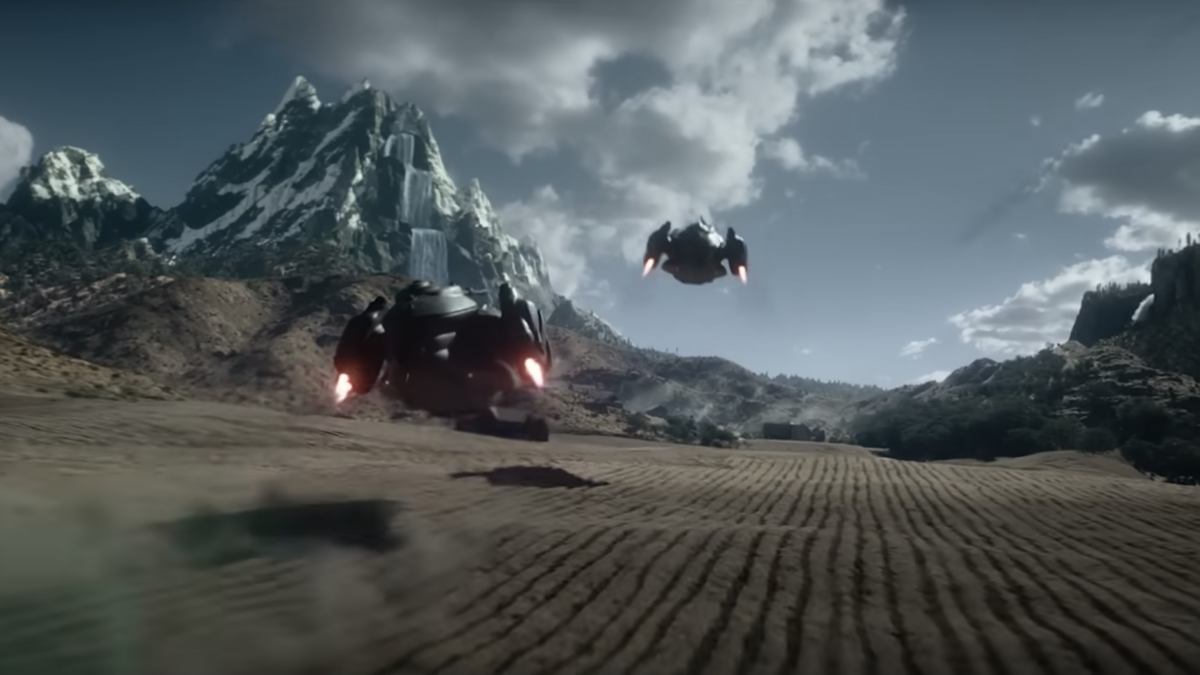Zack Snyder has been a controversial filmmaker for decades. Not because of his politics or the things we usually associate with controversy, but because almost every project he does is creatively divisive. His latest project for Netflix, “Rebel Moon,” is no exception.
“Star Wars” has clearly lost its way, at least cinematically, and Snyder (via Netflix) seems to be trying to fill the gap in the space opera genre. Disney’s sequel trilogy was one of the most bizarre pop culture fiascos of all time, one that has left Disney with no confidence in where it should go.
Snyder tried to get in on the new “Star Wars” projects when Disney initially bought Lucasfilm. Part of his pitch was a more “mature” take on the galaxy far, far away. With the possible exception of his debut film, an excellent remake of “Dawn of the Dead,” Snyder has never had his finger on the pulse of the zeitgeist, evidenced by taking such a clownish pitch to Disney.
Of course, they passed, and the idea eventually morphed into “Rebel Moon.” The end result is not good, but it is very much a Zach Snyder space opera. Snyder is nothing if not a visionary. His films are always loaded with visual drama and scope. Unfortunately, that’s all they are — a lot of style with no substance. In an era that is not known for visionary directors, at least not ones who make big bucks at the box office, this is both frustrating and refreshing. Snyder never does anything small, and that means most of his films are epic disasters. Visually interesting disasters but still disasters.
The opening shot of “Rebel Moon” is a perfect example of everything wrong with Snyder’s filmmaking ethos. A large spaceship meanders through space. It is neither imposing nor visually interesting. It limps along like an obese salmon looking for a place to die. Nothing is happening except for Anthony Hopkins’ narration, which sets the stage for the unnecessarily complicated political realities of this world. It’s boring and immediately disengaging.
Contrast this with the opening to 1977’s “Star Wars.” The legendary crawl quickly rolls across the backdrop of space, very succinctly telling us what we need to know. Then a small ship flies into view, being chased by a massive ship that takes up the entire screen. This visually communicates to us the dire situation of the rebellion and the extensive menace of the empire. There’s no way to even tell that the big ship in Snyder’s opening is the bad guys, the bizarrely named Motherworld.
The best part of the film is the next segment where we are introduced to our heroes. Simple farmers on a beautiful planet, with animals similar to horses. And then the Motherworld interrupts their idyllic existence after almost 30 minutes of slow-paced exposition. It is only then that we realize the boring ship from the beginning is carrying the villains. Snyder’s fundamental problem is that he does not try to communicate information through images; rather, he is in love with the images themselves.
This is what makes him a visionary and flawed filmmaker. He has the attitude of a painter, not a storyteller. Georgia O’Keefe, the famous painter of large flowers and bones in the desert, saw herself as a true aesthetic objectivist. She deliberately sought not to convey meaning in her art but only beauty. This was in part because the era she came up in was dominated by Freudian analysis. Her flowers were seen as vaginal instead of just beautiful. She tried to escape the banality of this sort of analysis by only focusing on form and color. It didn’t work. The critics always interpreted her art as having various (and incorrect) meanings.
Snyder is similar to this, except his films are rarely over-interpreted. If anything, it usually feels like there’s nothing there to interpret. He’s stuck in the reverse tragedy of O’Keefe. Snyder simply does not understand how to tell a story visually, but he does understand visuals. It is the only thing he seems to care about.
There are truly breathtaking moments in “Rebel Moon,” shots that look like they could be paintings. But they aren’t leading anywhere interesting. Netflix seems to have exacerbated Snyder’s worst tendencies by giving him free rein. He always tries to assemble a team of rag-tag characters, but never does any character development. They are not so much meaningful members of a team but just visual stereotypes that complement each other in terms of color palette, beautiful but hollow.
This will not fill the pop culture gap that Disney has been unable to fill with “Star Wars.” When the film ends on a cliffhanger of sorts, there is relief that the film is over, with very little tension or desire to see what happens next. This is particularly troubling given that part two is already done and coming out in a few months.
One has to respect the guts it takes to single-handedly attempt to compete with “Star Wars,” something no one else is even attempting — and to make such visually stunning and unique films that are bizarrely vapid. That may make him the most prophetic filmmaker of his generation. In a world where so-called gender is performative, maybe storytelling doesn’t matter anymore. Maybe that’s all we have left: hollow stereotypes with no substance.









